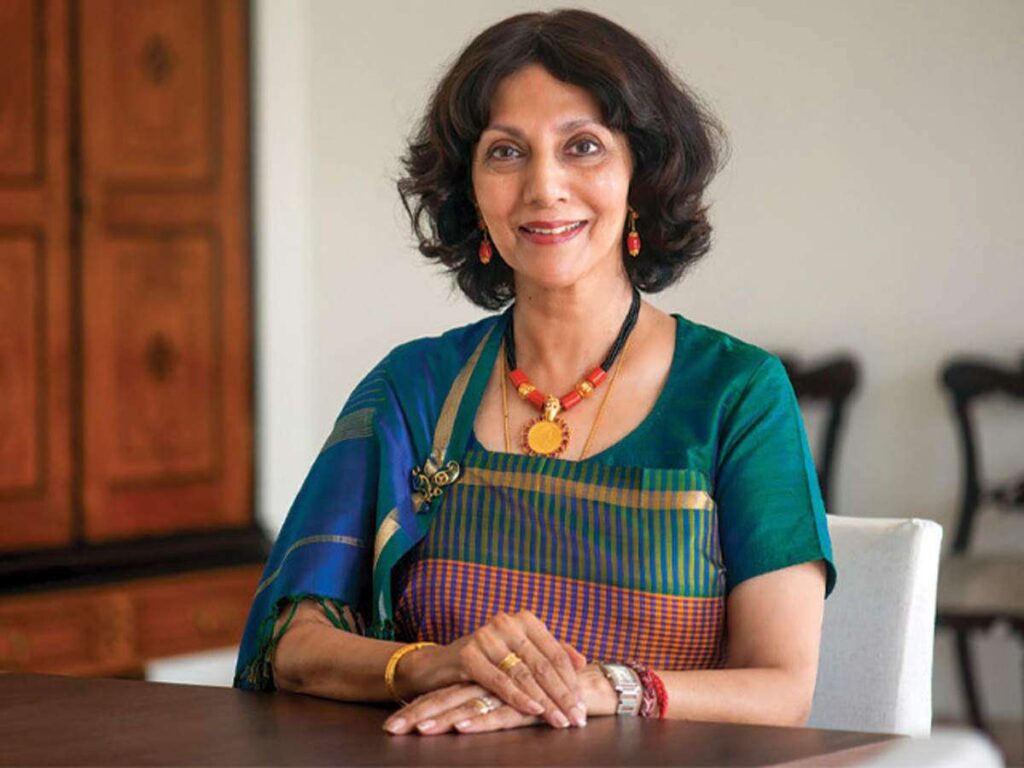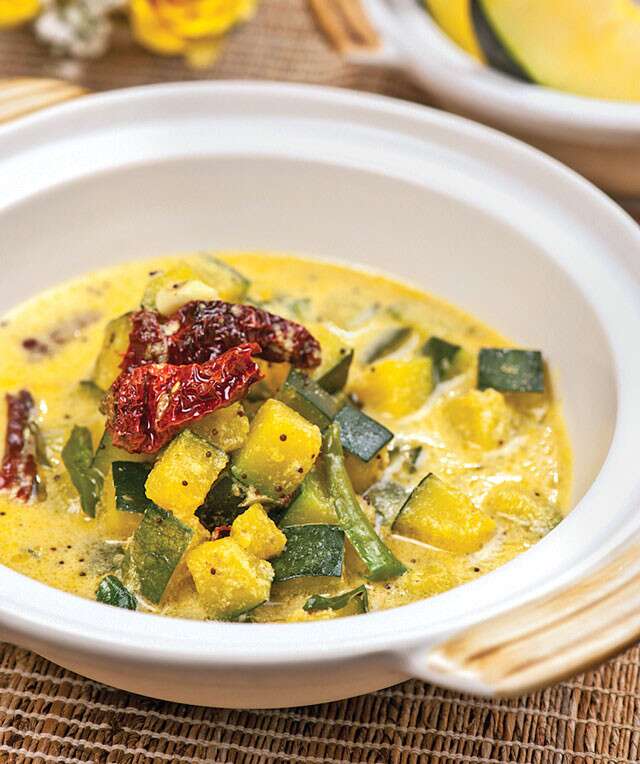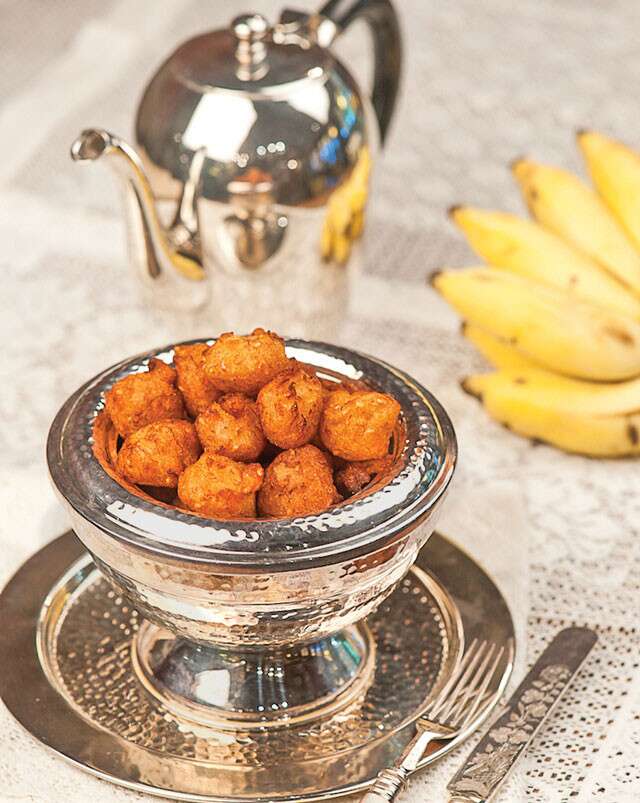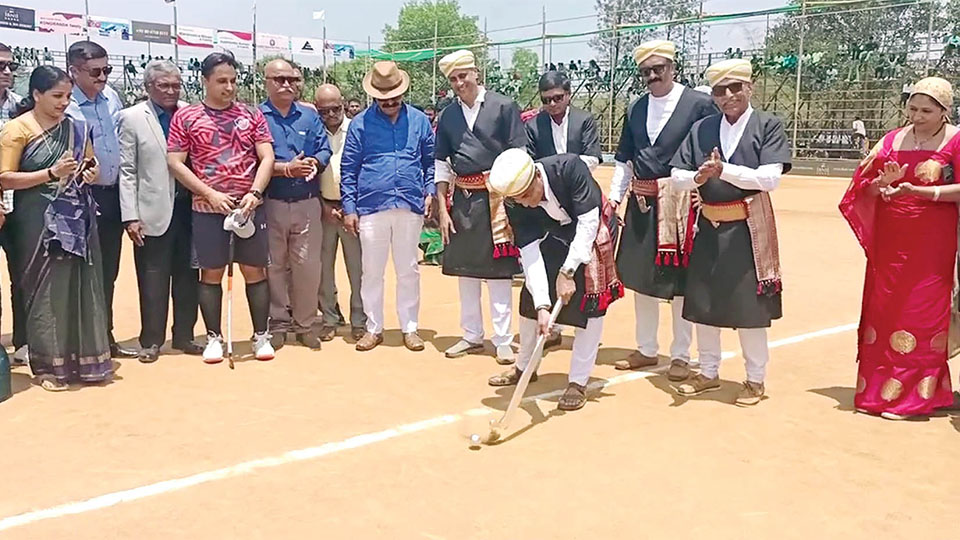
The 24th Edition of Kodava Hockey Festival 2024, dubbed the ‘Kundyolanda Hockey Carnival’ and organised by the Kundyolanda Family, began with vibrant fervour at the General Thimayya Ground at Napoklu Karnataka Public School yesterday. Matches will be played on three grounds at Napoklu.
Pandanda K. Bopanna, President of the Kodava Hockey Academy, inaugurated the event by striking a silver hockey ball with a hockey stick. Virajpet MLA and CM’s Legal Advisor Ajjikuttira S. Ponnanna, Kodagu Deputy Commissioner Venkat Raja — who notably played for Coorg 11 against Navy 11 — graced the occasion.
Other dignitaries included MLC Suja Kushalappa, author of ‘The Vanishing Kodavas’ Kambiranda Kaveri Ponnappa, Olympian Paikera Kalaiah, Lt. Col Baleyada Subramani and Akhila Kodava Samaja President Paradanda Subramani.
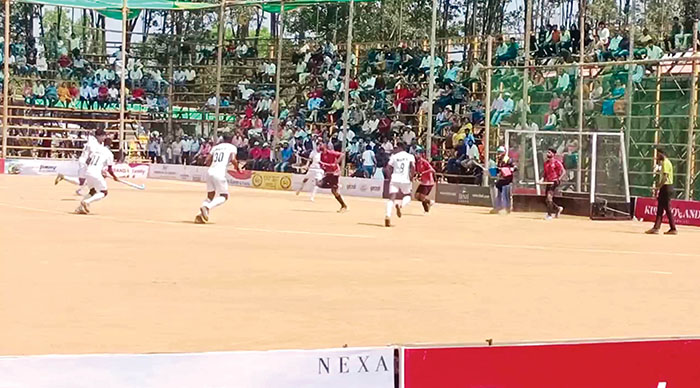
Originating in 1997 from the visionary insight of the late Pandanda Kuttappa, affectionately known as Kuttani, a former State league referee, the Kodava Hockey Festival has evolved over the years and is now managed under the auspices of the Kodava Hockey Academy.
Scheduled from Mar. 30 to Apr. 28, this month-long festival promises an exhilarating experience for sports enthusiasts and hockey aficionados alike. This time, over 360 teams from various families have registered for the festival. It serves as an annual spectacle, drawing together families from diverse locales to revel in their shared passion for hockey and their common heritage.
The registration of 360 teams marks a historic milestone in the tournament’s history, setting a new record for participation. In addition to the thrilling hockey matches, attendees can anticipate a multitude of attractions.
A vibrant food festival showcasing authentic Kodava delicacies alongside diverse cuisines promises to tantalise taste buds. Matrimonial initiatives and cultural events celebrating the community’s rich heritage add further excitement to the extravaganza.
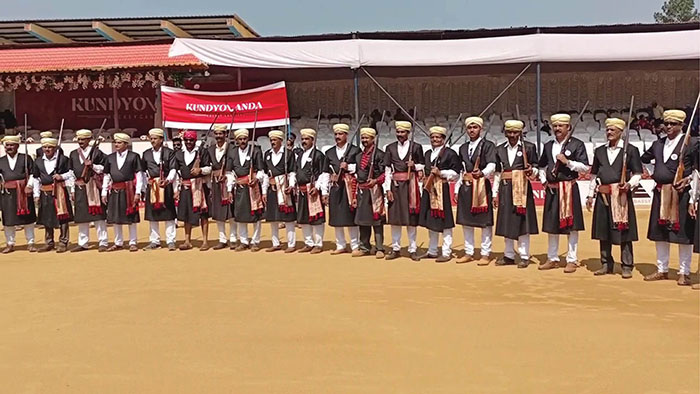
Before the formal inauguration, a grand procession commenced from the Napoklu Sri Rama Mandira, leading to the main playground. The procession was joined by hundreds of Kodava men, women, and children adorned in their traditional attire.
Multiple folk dances, musical instruments and art forms, imagery and symbols from the Kodava community added to the vibrant atmosphere of the procession.
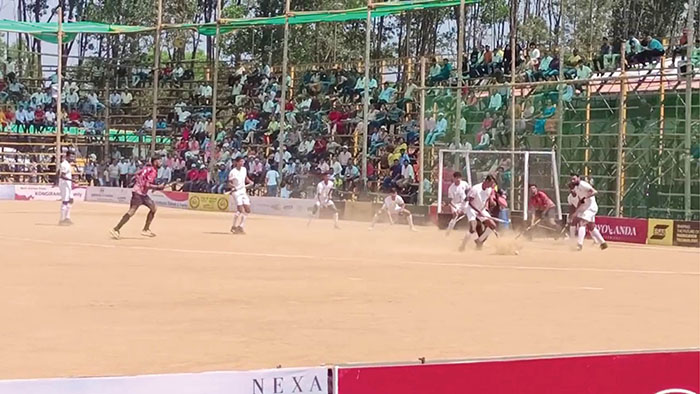
In honour of the festival’s 24th edition, 24 balloons were released into the air and 24 rounds of gunfire resounded, with each bullet symbolising a participating family. Before each gunshot, the names of the families were announced aloud, signifying their integral role in the festival’s legacy.
With a staggering total of 5,760 players, 730 coaches and managers and 40 technical staff actively participating, the tournament guarantees an atmosphere filled with intense competition and promises to create lasting memories for all involved.
source: http://www.starofmysore.com / Star of Mysore / Home> Sports / March 31st, 2024









